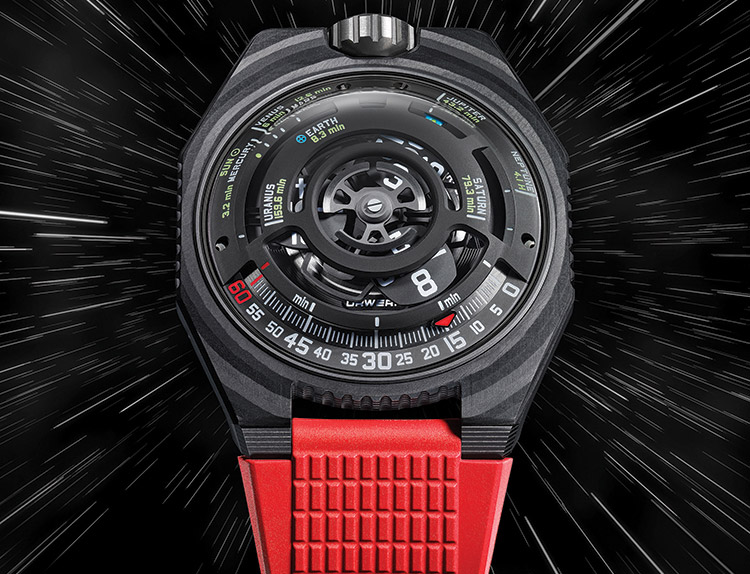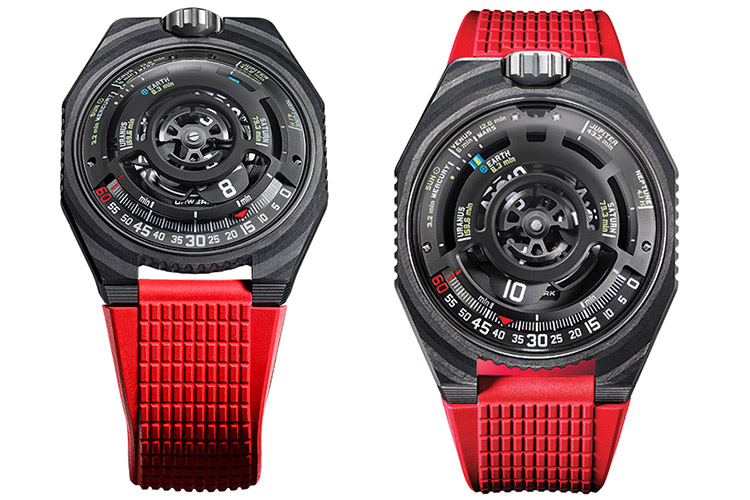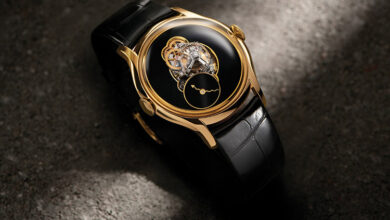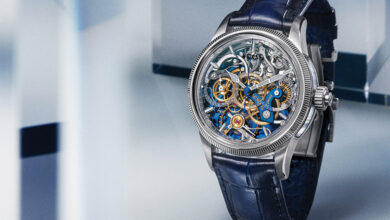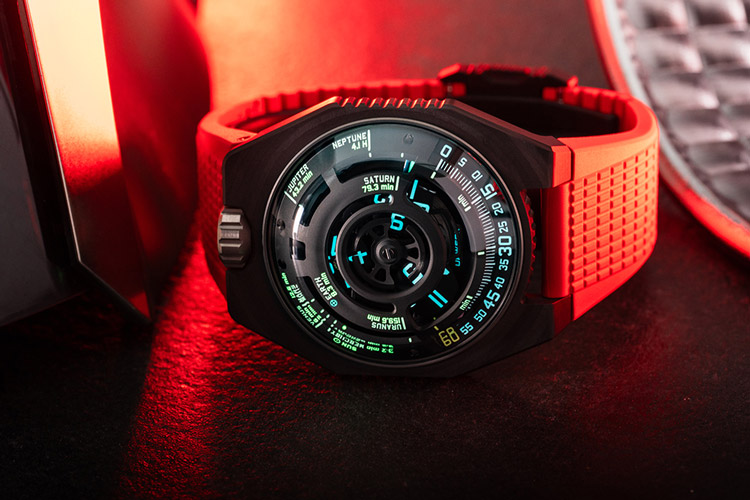
URWERK in its latest creation UR-100V – “LightSpeed” sets off on an odyssey through our cosmos. Housing a 3D planetarium featuring eight celestial bodies from our solar system, LightSpeed traverses time, space, and light, while sitting snugly on the wrist
In an age when science fiction merges with reality, certain numerical values possess reassuring, pervasive and nearly immutable characteristics. These include the number 299,792,458 km/s – a mysterious figure relating as much to the physical theory of classical mechanics as it does with Asimov’s worlds of fantasy. It represents the ultimate speed: that of the propagation of energy, mastered only by the initiated. A pervasive constant, the speed of light symbolised by the letter “c”.
This almost mystical number calls to mind both the foundations of Einstein’s theory of relativity and the futuristic visions of a distant galaxy explored by the Jedi of “Star Wars” and the intrepid captains of “Star Trek”. Mastering this speed means plunging into hyperspace, defying the laws of physics, and navigating through the universe’s multiple dimensions.
URWERK’s UR-100V LightSpeed is the realisation of this dream, bringing Time, Space, and Light together in a single place. The UR-100V LightSpeed houses a 3D planetarium featuring eight celestial bodies from our solar system, eight points of reference.
The Sun’s rays reach every planet in a specific measured time, reminding us of the dizzying distance and ephemeral beauty of our solar system. The light we see today is an echo of the past, an instant frozen in cosmic time. Within our space-time system, the Sun’s light reaches Mercury in 3.2 minutes, Venus in 6 minutes, Earth in 8.3 minutes, Mars in 12.6 minutes, Jupiter in 43.2 minutes, Saturn in 79.3 minutes, Uranus in 159.6 minutes and Neptune in 4.1 hours. Such is the beauty embodied by the UR-100V LightSpeed, whose ultimate reference is the Sun, which inspires the rotor on the back of the timepiece.
In addition to its interstellar dimension, the UR-100V LightSpeed picks up the principle of displaying the hours and minutes, which is based on the absence of hands. Instead, a satellite moves along an arc of a graduated circle. The first carries the hours, the second the minutes. And when an hour satellite has covered its 60 minutes, the next one bearing the next hour, appears in front of the minutes index.
